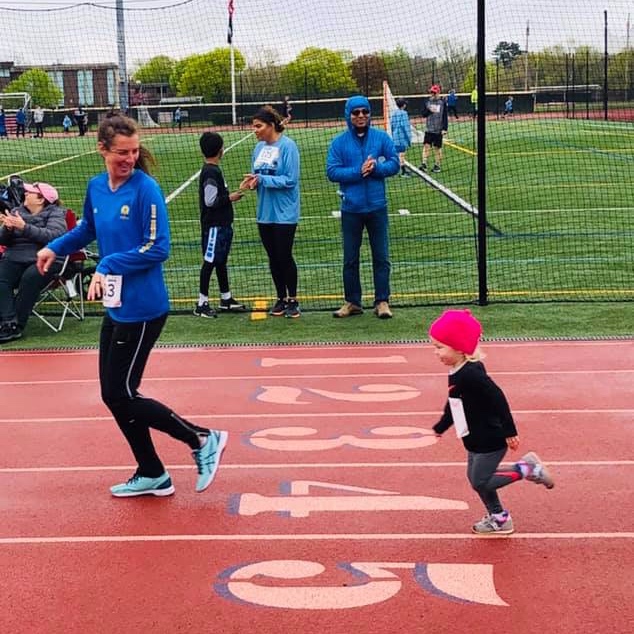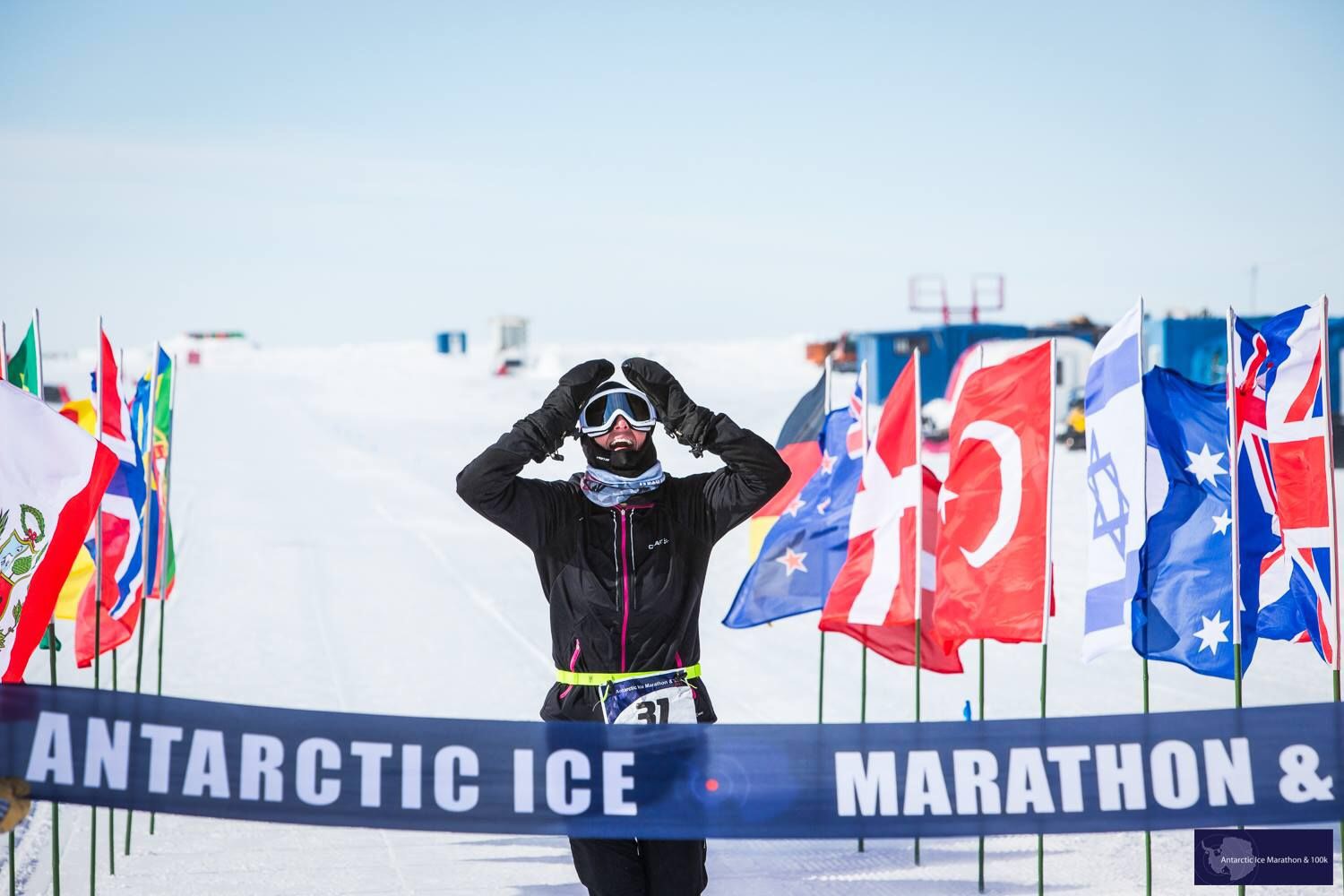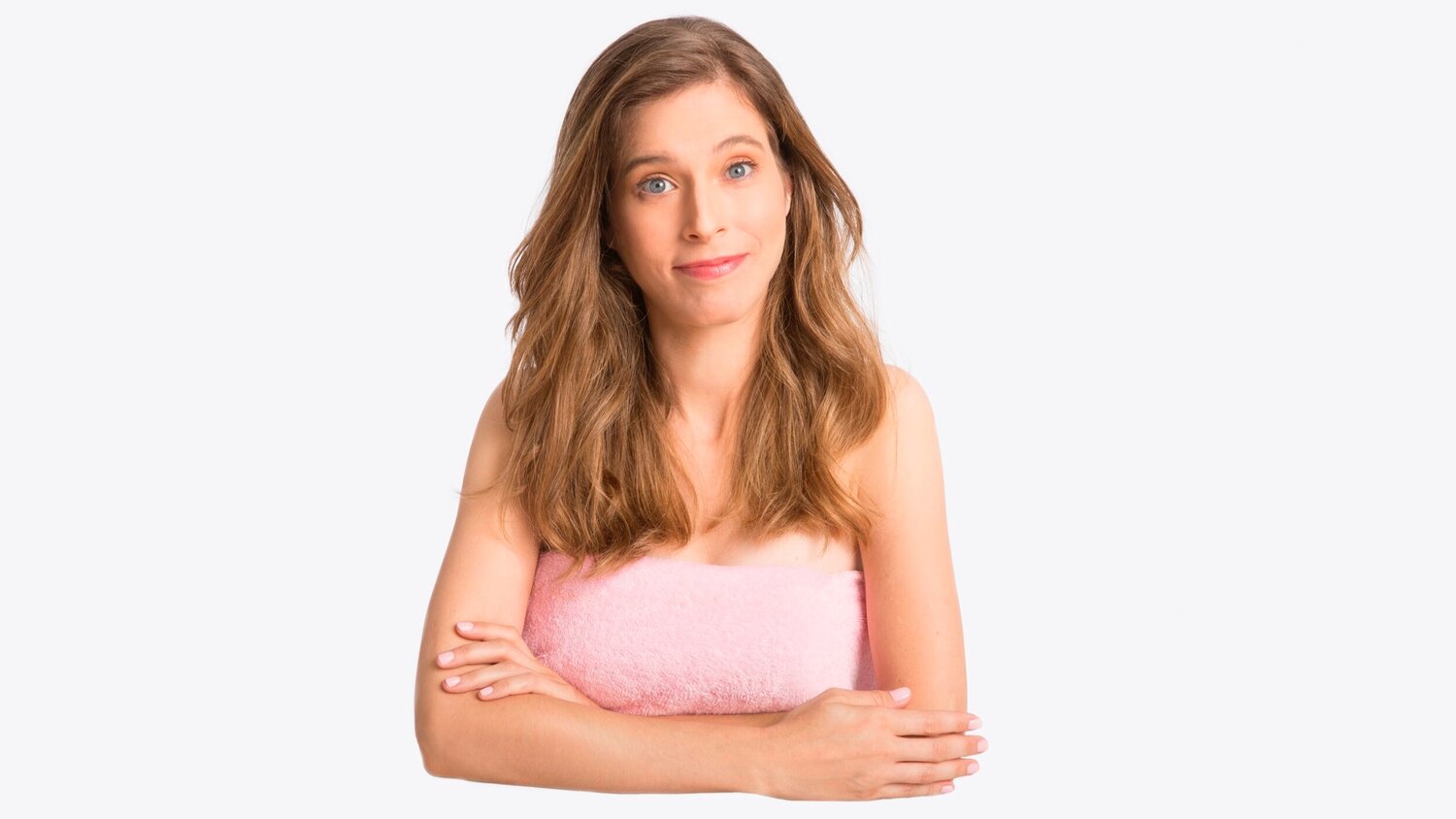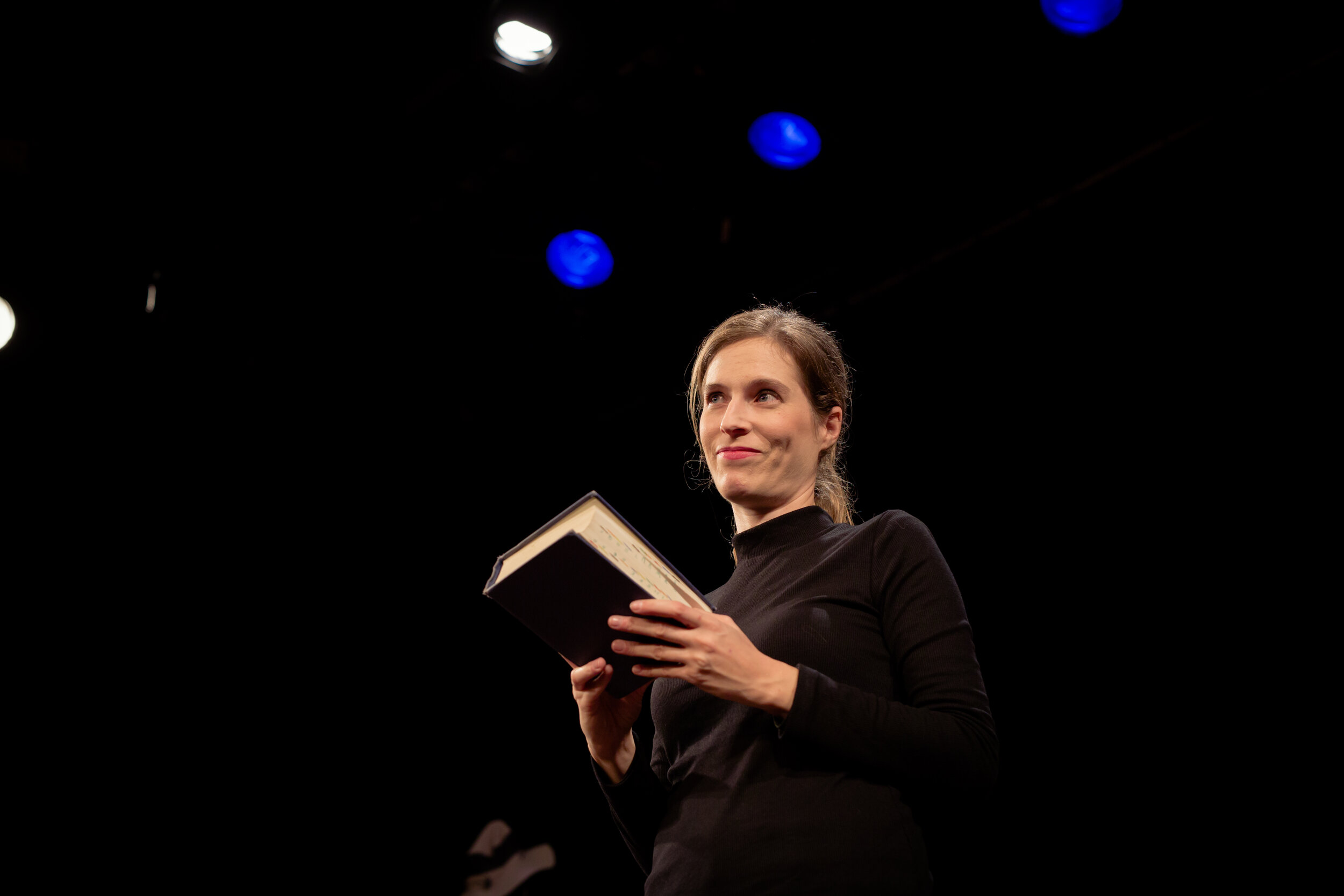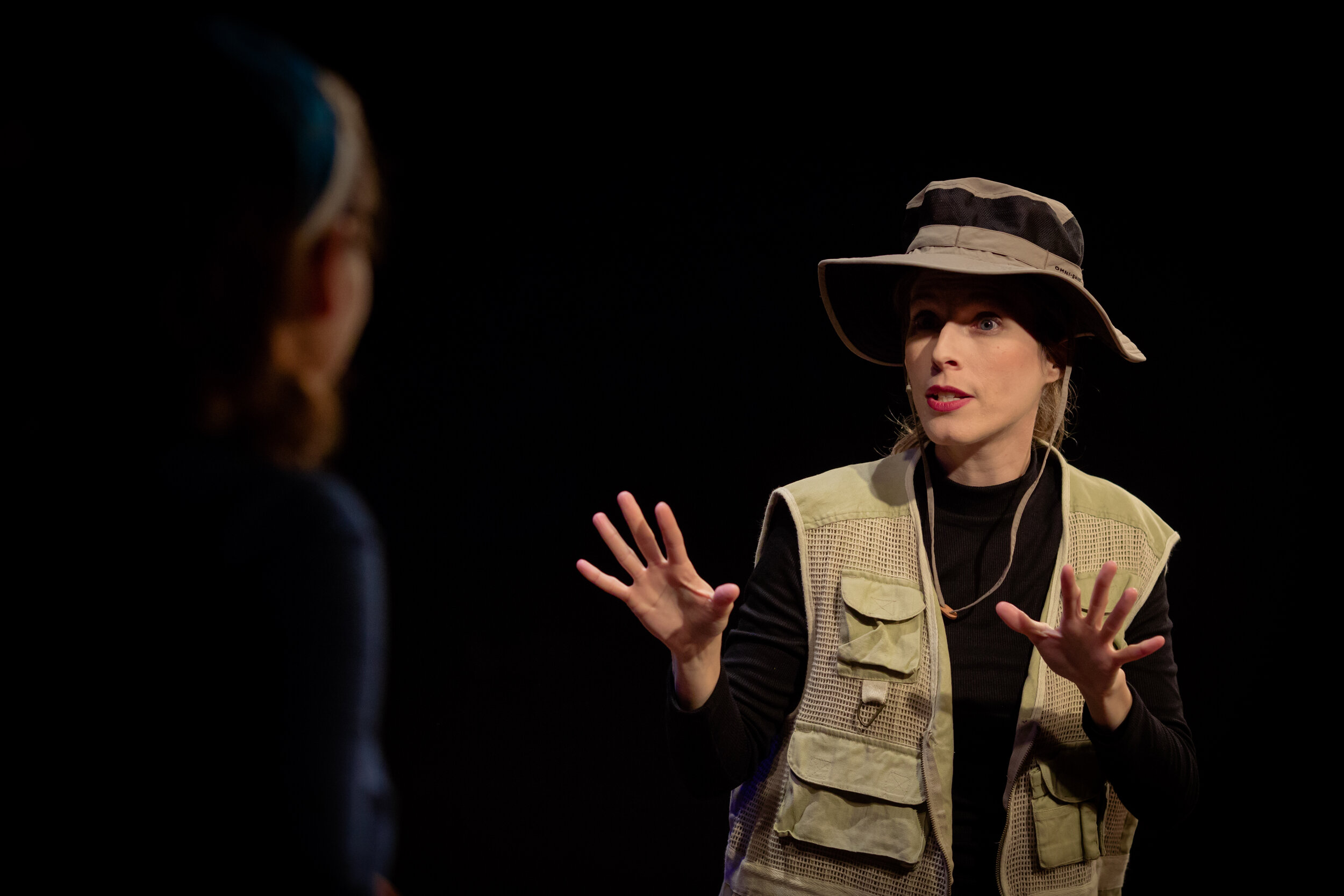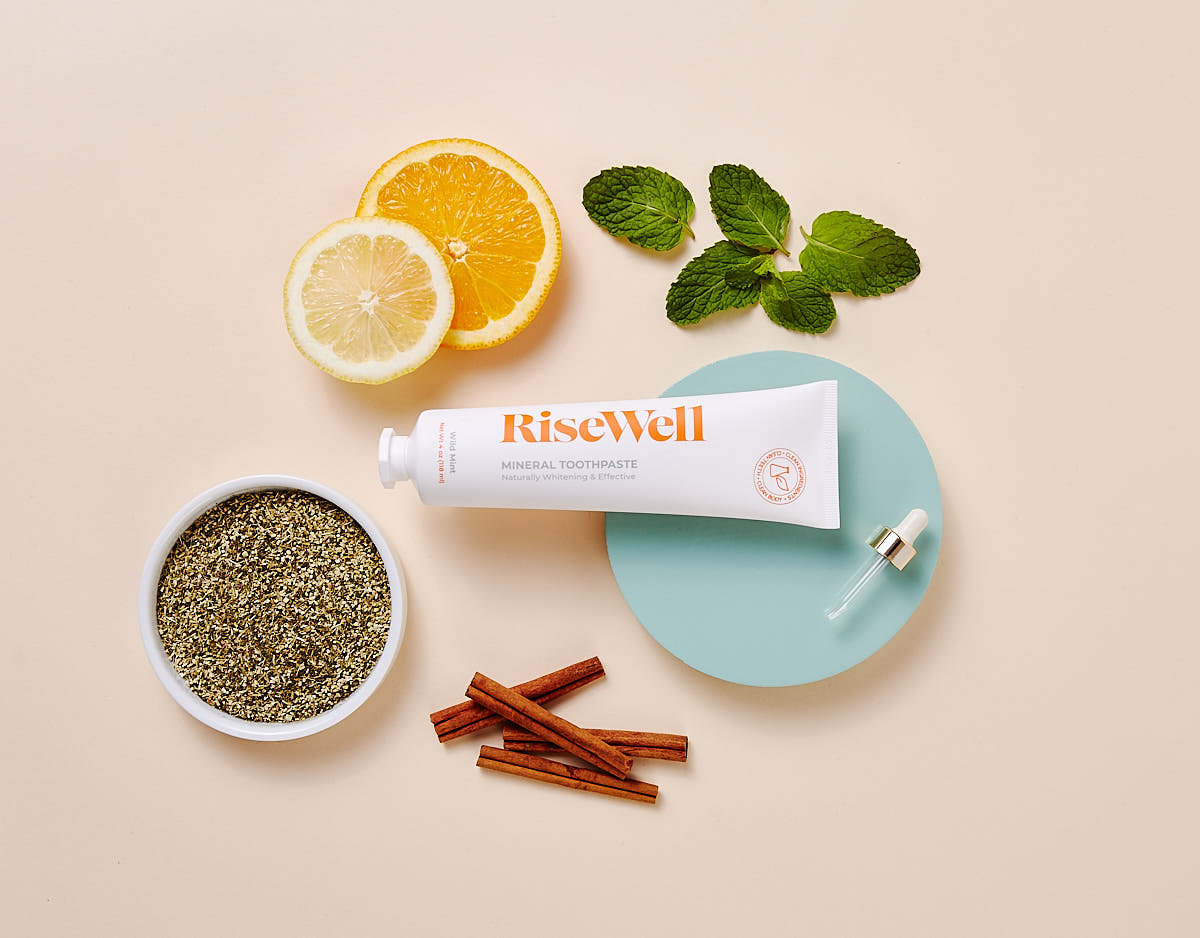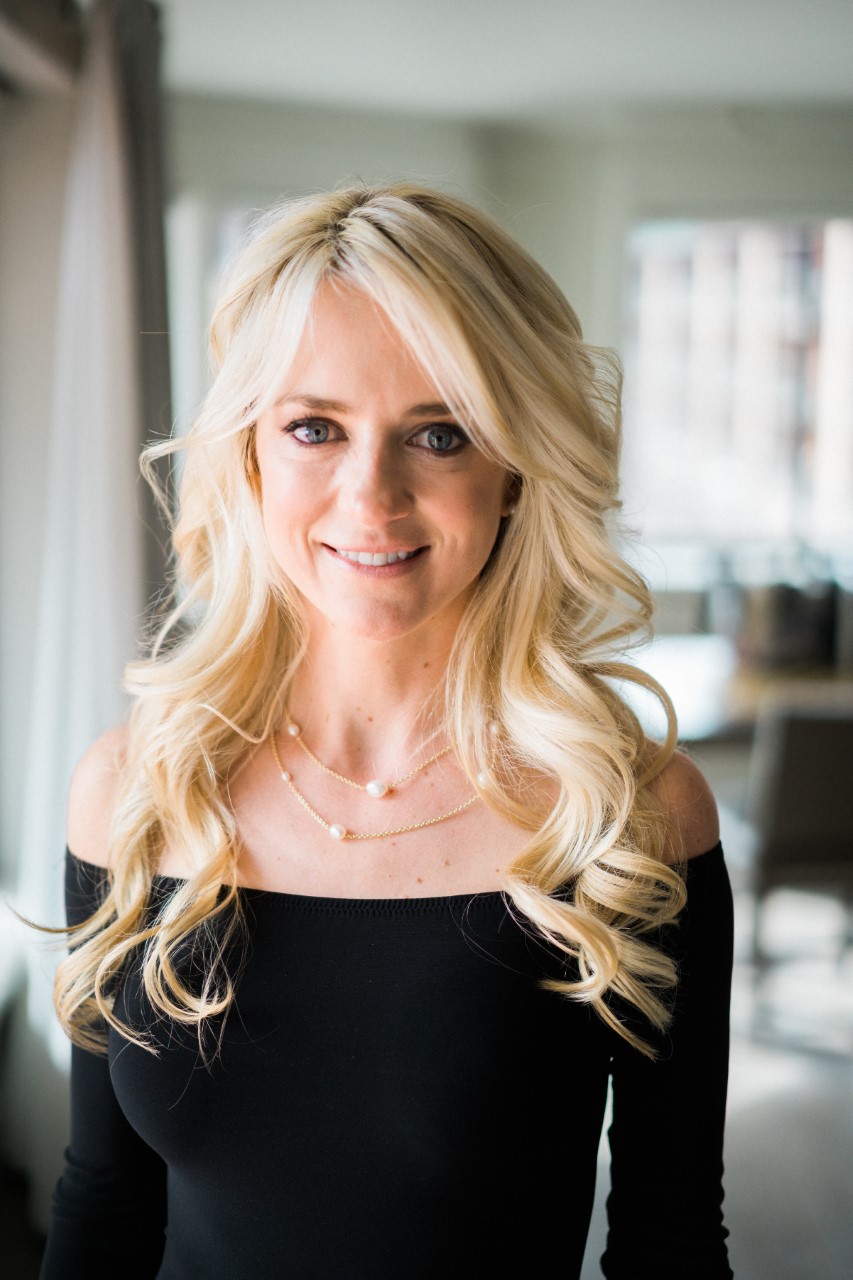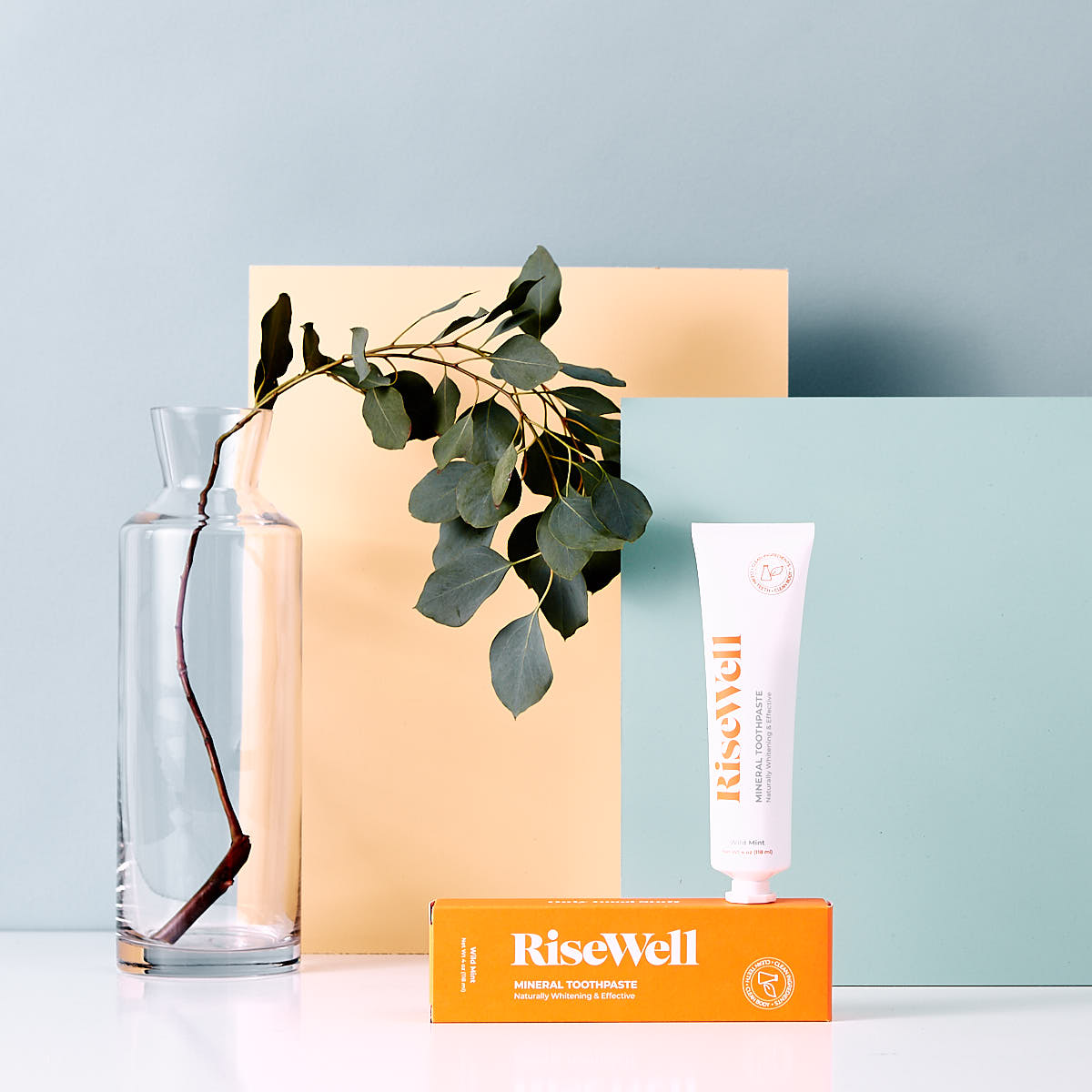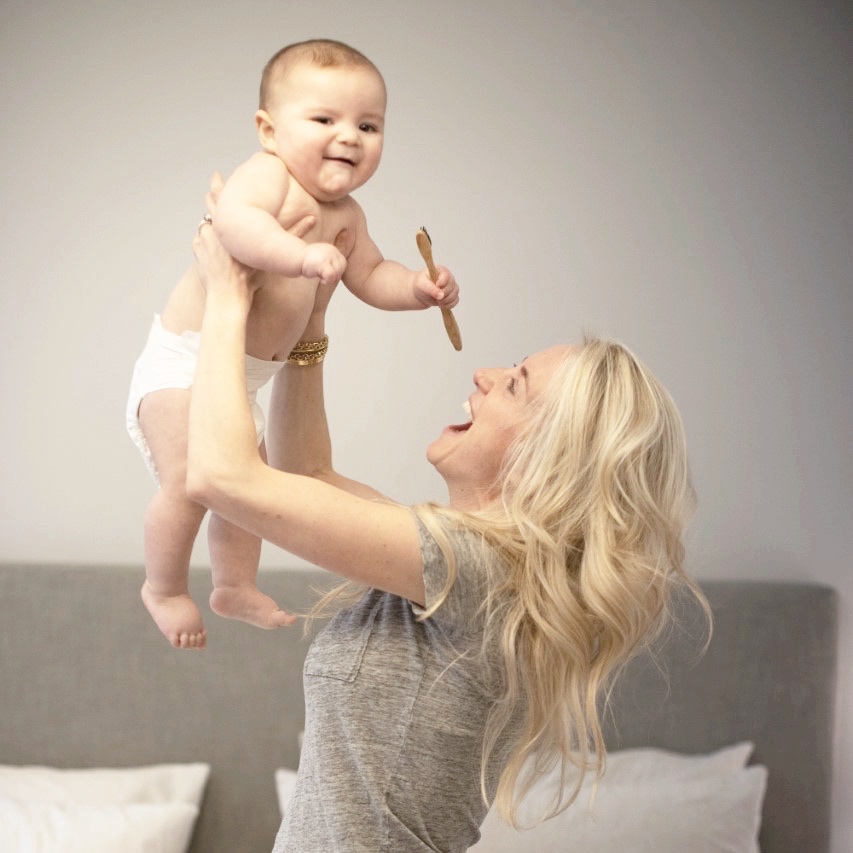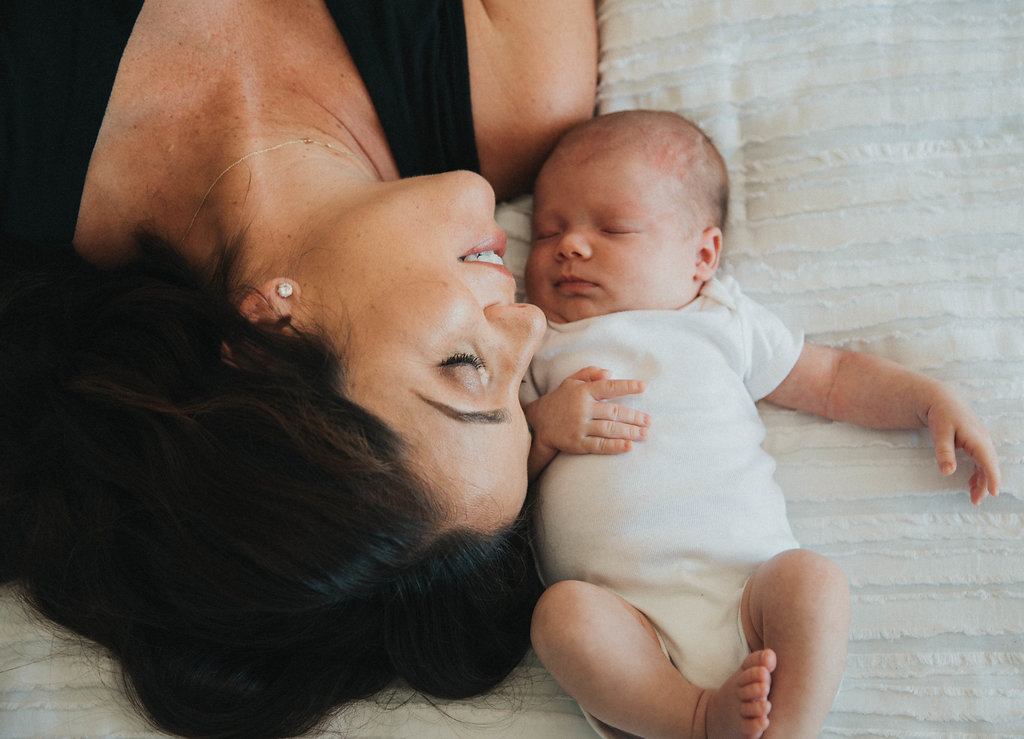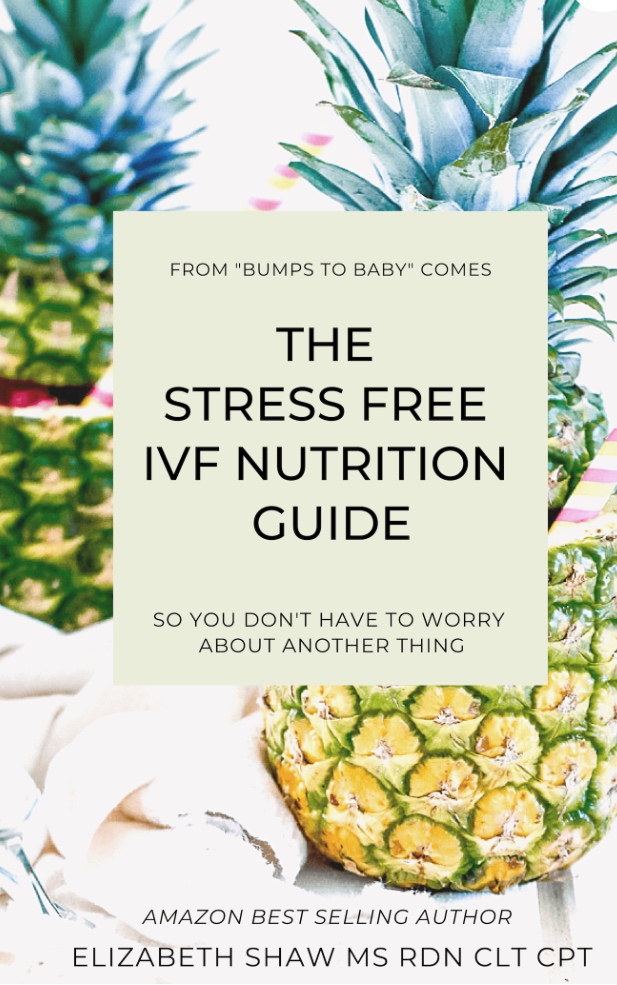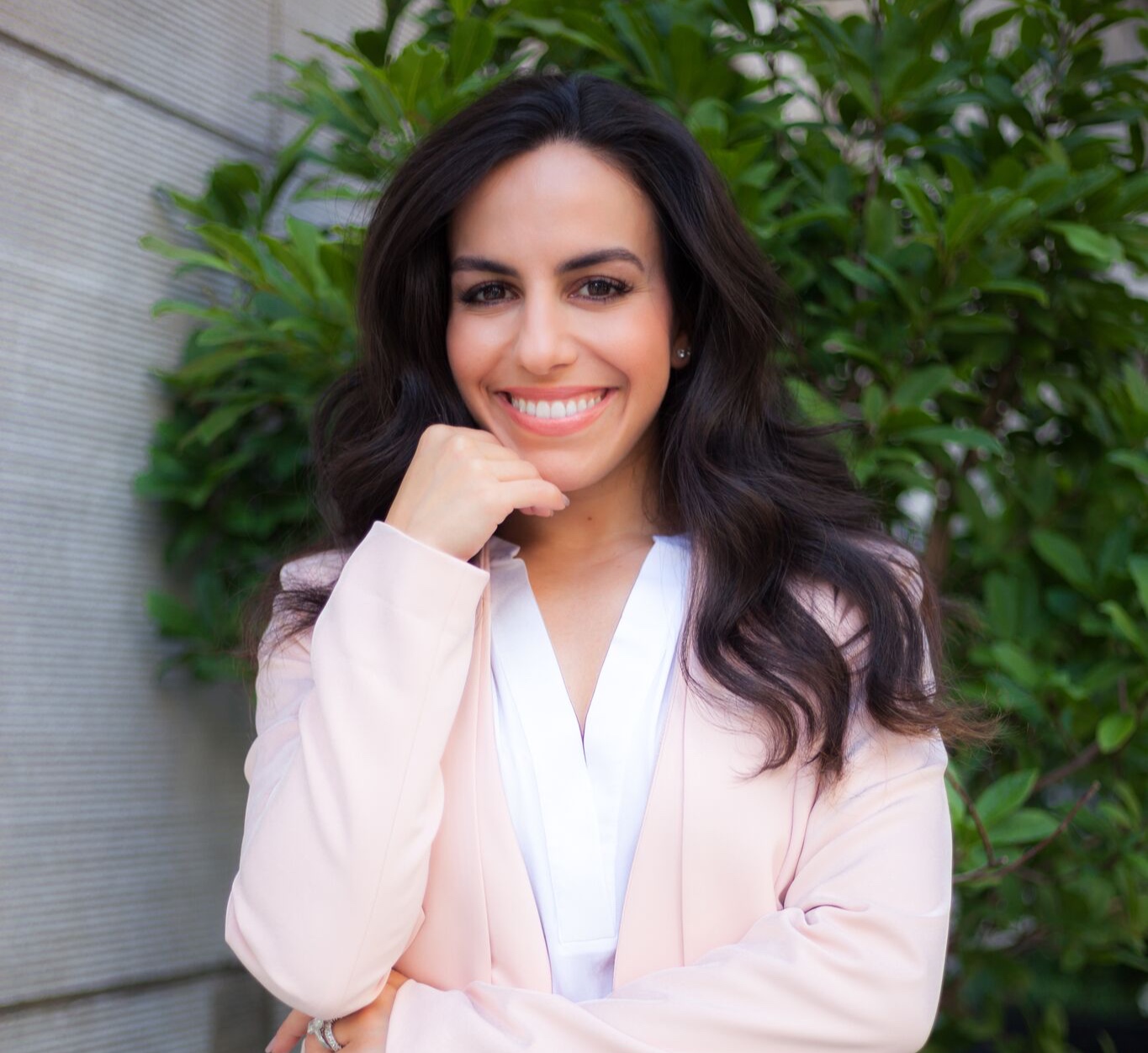Photo courtesy of Kelly McLay
At the age of 24, Kelly McLay was diagnosed with the seemingly impossible - premature ovarian failure (early menopause). This is the story of how a marathon helped her journey take on a new meaning - keeping her running towards the finish line and her family.
You were diagnosed with hypothyroidism at 10. Did your doctor recommend any lifestyle or diet changes? Was there any discussion about your future fertility?
KM: Thyroid (disorders) run in my family so it was almost inevitable that someone in my immediate family would have one. My grandparents, my mom, my two uncles, my cousins and my sister and I all have a thyroid condition. We are an overall healthy family so there were no discussions about diet. While women with thyroid issues have greater fertility issues, I was only 10 at the time I was initially diagnosed and usually any major complications from the disorder begin around age thirty so infertility was not the focal point in my youth. To entirely lose my infertility in my early twenties was a shock. It’s also rare that a thyroid condition would result in complete (ovarian) failure. My sister has a thyroid condition and has had two babies naturally, with a third on the way.
Was there a tipping point in your early twenties or an experience that pushed you to seek medical assistance?
KM: In the (Women’s Health) article I reference that I was a hot mess. I was truly out of control, both physically and mentally. I had sought support from a medical professional for over a year who upon my third visit asked, “Why are you here? Your symptoms haven’t changed”. That pushed me over the edge. I remember saying, “I understand that I am not bleeding profusely but this is not me. I don’t go to bed at 8pm and then wake up tired twelve hours later”.
I had always been athletic but gained over 45 pounds that year alone. I was tired all of the time, cranky, crying and acting irrationally. My doctor advised that I was just getting older. I sought a second opinion and that doctor finally listened. She asked if I had ever had my thyroid tested so I shared that I had a thyroid issue when I was younger but was told that I no longer needed to take the medications. Loaded with this background, my new doctor retested my thyroid.
The tests revealed that my metabolism was that of a 90-year-old woman.
My new doctor was so supportive and prescribed thyroid medication for me to take daily, advising that the medication should fix my symptoms, but if I noticed anything else to please let her know. I felt crazy sharing seemingly irrational symptoms, but did anyway. I had been crying about a lot of things, I felt off balance, at some points happy and then immediately sad. I would sweat through my bed(sheets) every night and then have to change them because they were soaked through. Upon hearing this, my doctor offered to run some blood work. Neither of us had any idea what information I would soon receive. My FSH levels revealed that I was well beyond menopause. I asked where someone my age was on the scale and she said they’re not.
The results were definitive, I had gone through menopause.
How many doctors did you see before you received the diagnosis of menopause?
KM: Two. One who didn’t listen and one who took the time to hear what I was saying, even though my symptoms were not at all typical for someone my age.
You mentioned that the ultrasound tech described your ovaries as “shriveled raisins”. Do you recall your first reaction?
KM: Do I ever. My eyes are tearing with the memory. I would expect that when most people think of ultrasounds, they might correlate it to pregnancy and seeing an outline of a baby. At least that is what I associated ultrasounds with…
At my first-ever ultrasound the technician volunteered out loud, that my ovaries looked like shriveled raisins. I just laid there quietly on the exam chair as the tears dripped from my wide open eyes and off of the sides of my face. I will never forget that moment. I wish I had said something but in the moment I remained stoic until she left, and then cried more.
At what point were fertility options discussed and how did you feel when you were told that you would have to use an egg donor?
KM: After the diagnosis I saw a series of doctors. They all began with a discussion of diet and maintenance. We spoke about potential side effects of long-term use of estrogen (during cancer treatment) and also possible effects of not being on not being on estrogen (bone density loss and increased cardiac concerns). I was advised to increase soy into my diet, to add supplemental estrogen, and use kegel balls (to strengthen my vaginal muscles). All of this was a shock, I didn’t fully grasp all that was happening,
Almost immediately, I had an appointment to see if there were any follicles remaining and if they could be stimulated. I was desperate to hold onto any flicker of fertility. But there here wasn’t an option. Egg freezing didn’t really exist at that time. Regardless, the results of the follicle exam indicated that there was no amount of stimulation which could result in any eggs to freeze.
One (fertility) doctor said to me point blank “At the end of the day I can get you pregnant but it won’t be your baby”.
I burst into tears. Her delivery landed coldly and harshly. It was then that I realized that the only opportunity in which I could carry would be via donor. It was a stark reality at the age of 24.
It took a long time to advocate for myself and find a medical team that cared and understood. I now have an amazing team who are almost like family. My endocrinologist and fertility doctors have truly been on this journey with me; I am so grateful for their support. When my husband and I were ready to do the egg donor process and begin fertility (treatment), the first clinic we went to had their own agenda and not ours in mind. It was important for us to find a place where they had our best interests in mind so I am grateful we looked for a second option and found what we were looking for.
I can now tell that person who is considering egg donor that my baby is every bit mine and even acts like it too. Friends always say “are you sure she is not your DNA”!
You wrote that running inspired you to own your diagnosis of early menopause. What attracted you to running? What was it about running that created a release?
KM: I needed a goal. I was young and had always been an athlete but actually hated running. I had been tired, depressed, and just needed motivation. My sister and her friends had begun training for the Boston Marathon and I threw myself into their goal. Thankfully they welcomed me. It was not pretty and it was not easy but I did it.
I spent over a month trying to jog one three-mile loop. I cried. I was in extreme pain. My legs and lungs stung and I thought if I couldn’t run three miles, 26.2 seemed ridiculous.
But it was that commitment, that pain, the pounding the pavement and seeing the progress that inspired me to keep putting one foot in front of the other. So much of what had felt like failure and the part of me that had died, now felt alive. It was really powerful. I was motivated to do more, to go further.
How has running changed your life?
KM: In so many ways. This passion became my profession. I started out taking runners around the world to run marathons, and then it turned into the company that I started called Fitness International Travel (FIT).
Running has brought me around the world to all 7 continents four times. Even more so it has opened up a community of people and individuals who are incredible. We are all so different but the marathon unifies us and unites us through both the hardships and celebration of the accomplishment.
I never expected that from those moments of solitary winter training for the Boston Marathon that I would be here today. Had I not gone through menopause, I wouldn’t have started running and I wouldn’t have had all of these positive experiences.
How many marathons have you completed? And you mentioned that you ran 7 marathons on 7 continents in 7 days… That is amazing. Where were they and how did you keep going?
KM: I keep telling my husband I have to go back and track all the marathons! I have about 70 under my belt in total. The World Marathon Challenge – 7 marathons, 7 continents, 7 days – was and is amazing. I still pinch myself. We started in Antarctica, then went to Cape Town, Perth, Dubai, Lisbon, Cartagena, and finished in Miami. I did the marathons untrained 13 months after the birth of my baby. It was painful but so much growth comes through navigating pain and with each finish, I was closer to the goal. Trust me there were moments at 2am in the rain when I wanted to quit. But I didn’t.
“Living isn’t about quitting, it’s just about trying one more thing, even if you have to walk or crawl to do it.”
You shared that thirteen years to the day after you found out about having premature ovarian failure/early menopause, you crossed another marathon finish line in Dublin with the new title of mom. How has becoming a mother changed you? What would you say to anyone contemplating going the egg donor route?
KM: I had so many fears about the egg donor process. There were so many unknowns. If you sat with any financial advisor and stated the amount of money that you planned to spend on an unpredictable outcome, I can almost guarantee that they would likely not recommend that investment. It hasn’t been easy and there were more unanticipated speed bumps than I could have imagined. I am grateful to have an incredibly supportive husband who is completely in it with me, and we lucked out with a beautiful and intelligent little girl.
There were all sorts of fears of carrying “someone else’s baby” and what if “the baby didn’t look like me,” or what I would say if someone said, “she has your eyes.” So many doubts and fears.
My daughter has blue eyes. The donor had brown. My husband has green. Everyone says “ah she has your blue eyes!” And I just smile and giggle and say “yes, she does!”
I had so much bonding when I carried my daughter, Scarlett. I ran with her throughout 28-weeks of the pregnancy and she now loves running too. My husband and I have also kept our lifestyle mostly in tact with the (addition) of our baby. Scarlett has already traveled to four continents and while she is our first priority, she is part of our life and has adapted easily to our interests. If anything, Scarlett allows us to see the sheer joy in the simplest acts of life.
We also have this amazing woman that helped us get to where we are (by donating her eggs). Seriously, how incredible is that sacrifice for someone else to help give you the gift of life? When we decided to go the donor route, we were not sure about whether or not we wanted to meet our donor. Now we are glad that we had the opportunity to meet her, Our donor is absolutely stunning woman inside and out and we are forever indebted. It also adds an additional layer to the story about the evolution of our family.
Would you feel comfortable sharing your fertility journey and how it has continued?
KM: Yes of course. This is part of who I am and part of this entire process. Our egg donor cycle was very successful resulting in 17 embryos, all of which made it to day five. We then implanted two embryos resulting in a successful singleton birth with Scarlett. We froze 13 remaining high quality, high scoring embryos.
Scarlett arrived early at 32w6d due to pre-eclampsia. I went into the hospital, shared that I wasn’t feeling well and then surprise, I was induced and delivered Scarlett. Funny enough, we had the baby on the Wednesday before my planned (baby) shower that Saturday. We spent 4-weeks in the Special Care Nursery where despite prior genetic testing results from the egg donor and my husband, we were advised that Scarlett had a rare genetic disorder that would lead to feeding tubes and wheelchairs. They took a test, told us we would find out for sure in three months, and that we should enjoy these moments with her prior as she would start to miss milestones. We were devastated. We left the hospital with medicine and educated on how to administer daily injections to our new baby girl. Turns out, she is completely fine. But what a scare! Although nothing is perfect, running completely helps me tackle all of these moments of spontaneity and unpredictability.
After successfully getting pregnant the first time, we thought, what are we going to do with all the embryos?! How naïve were we! We decided to try for another child in February of 2018. We went in for the transfer and 10 days later found out that we were pregnant. The blood work and HCG escalation were fantastic. We told my parents and then BOOM, miscarriage.
After our first miscarriage, we thought, not all of the embryos must be good. We watched my HCG descend, just as we had initially monitored my HCG rise along with our hope. Each (blood) draw was a stark reminder of the loss. Still, we were optimistic because we had additional embryos.
On my birthday, May 1st, we did another transfer but it didn’t take. On June 12th we opted to transfer two embryos. Although the idea of twins scared us because we had a premature delivery with Scarlett, the increasing transfer attempts, losses, and the preparation each transfer was becoming more difficult so we transferred two more embryos. Both took and the numbers looked incredible. Our enthusiasm was short lived when we learned of another miscarriage which would need to be followed by a surgery.
After multiple tests for natural killer cells, blood clotting disorders, thyroid levels, scans of my uterus and then some, the results all came back normal without indication of a larger issue. On October 4, 2018, we did another transfer, and once again miscarried twins. Then we did one more transfer and that embryo didn’t take either. Pregnancy test after pregnancy test revealed a big fat negative.
Our last effort without testing embryos was to do a cycle where we did an ERA, a biopsy of my uterine lining in hopes to find the perfect transfer time post-introduction of progesterone. Once we received results, we did a transfer on May 8, 2019. At the time I was taking Lovenox injections daily, five estrogen pills vaginally and orally, an estrogen patch every three days, intramuscular progesterone oil injections every three days (later nightly), along with B12, selenium and pre-natal vitamins, a thyroid pill, baby aspirin. I also applied Crinone (progesterone) lotion twice per day. This time we got pregnant with twins and celebrated the day after we made it past our furthest miscarriage date. Then I bled the next day and my husband and I were convinced that once again, we had lost both babies.
Fortunately, one baby is still with us and we are 23-weeks as of today. I recently found out that I have a vasa previa, where the baby’s blood vessels are exposed over the cervix and if they rupture the baby is at risk. I will be hospitalized at 32 weeks if not sooner with an emergency c-section planned for no later than 35 or 36 weeks, if I make it that far.
It hasn’t been an easy pregnancy. I am scared daily something will happen.
It’s never quite simple is it? I hold on to being fortunate to have a chance at having this second baby. Despite how hard it is to go through (infertility), science is pretty incredible. Years ago I wouldn’t even have these opportunities at all.
You recently penned an excerpt in the book, Tales from the Trails. What inspired you to contribute? What do you hope that readers will take-away once reading your fertility story?
KM: I was honored to be asked to include this excerpt on Why I run, by a great friend and mentor Michael Clinton who is the author of the collection. It was entirely scary to be so vulnerable but so much of who I am has been shaped by this experience that I believed it to be important to share. I have always been open about my struggles despite the fact that so many other people are not. I believe that sharing these experiences may potentially help one or two people in the same situation. At least that is my hope. So I shared our story with the hope to inspire a few - women, men (husbands), a few families to continue to take one step forward despite what feels like constant failure because of the relentless obstacles.
What I love about the book is that they are a collective of inspirational stories from so many different perspectives. Many people might find inspiration that resonates with them within the book. As mentioned earlier, running unifies people from different backgrounds and experiences. I think that this book exemplifies that.
At the end of the day, there is nothing greater than to get home to my little girl and her daddy. Scarlett has motivated me to be an even stronger person and role model. I am grateful of all the obstacles that we have faced because I have learned so much through them. We are still at a scary point right now, and we hope that we have a successful outcome. Only time will tell between now and then.
In the meantime, we will just take one step forward and continue to lead by my mantra of “Happy Days.” Life is too short not to.
It’s important for me to share that however someone becomes a mom or a dad, that baby is theirs. My fears, ugly thoughts and doubts on what move to have taken, or even how far I should have kept going disappear when I come home from a long day and my baby greets me at the door shouting “Mamma”!
About Kelly McLay: Mom, wife, marathoner, and traveler, she values living by the mantra, "happy days," trying to live life to the fullest every day.
A two-time seven continent marathon finisher with 65+ total 42K courses under her belt, Kelly is passionate and respectful of the marathon distance. Kelly has 10 years of experience in guiding and developing sports travel to all seven continents.
In 2018, Kelly completed earned her World Marathon Majors’ 6th star as well as the World Marathon Challenge, 7 marathons on 7 continents in 7 days. She is one of 41 women globally who have finished the challenge. Kelly resides just north of Boston with her husband John and baby Scarlett. Outside of her family, there is nothing she takes more pride in than designing destination travel around the world, especially to marathons. To learn more about FIT borne out of Kelly’s incredible journey, click here.



